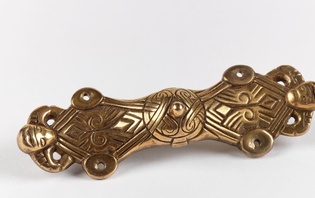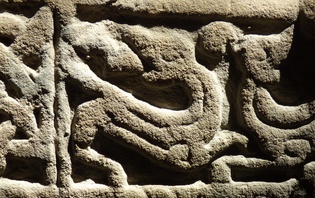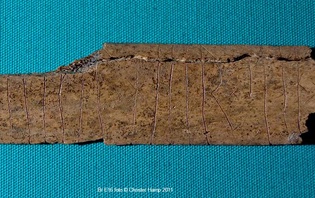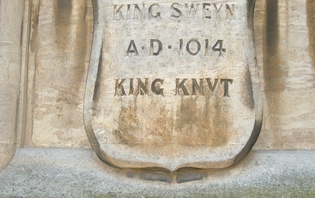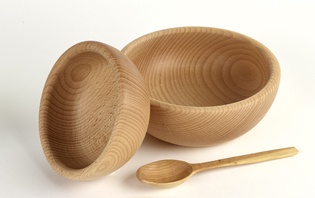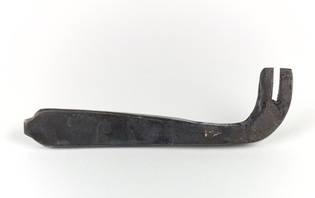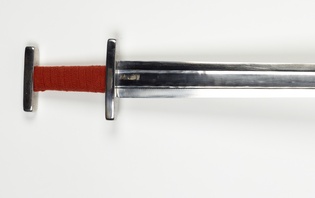The Rich and the Brave: Burials, Weapons, and Warriors
by William Pidzamecky, University of Nottingham
Posted in: Archaeology, Viking Age, Vikings
The common association of highly furnished weapon burials containing a male skeleton with warriors is still a highly debated topic and one that has a profound impact on how we view Vikings. Much scholarly ink has been spilled discussing theories surrounding motivations behind grave good deposition and the relation between weapon burials and the deceased in Scandinavia, Britain, and with varying degrees of success. Choosing which theory to apply to a situation is complicated by a variety of factors not least of which is that historical, geographical and chronological context changes how one interprets a ritual depending on the time and place it was practised. Furthermore, there is usually no knowledge of who selected the objects to be deposited and thus no concrete idea why they did so. According to Heinrich Härke, textual sources are the best means with which to attempt to determine motivations but are rarely present for the space and time under review (Härke 2014, 53–54).
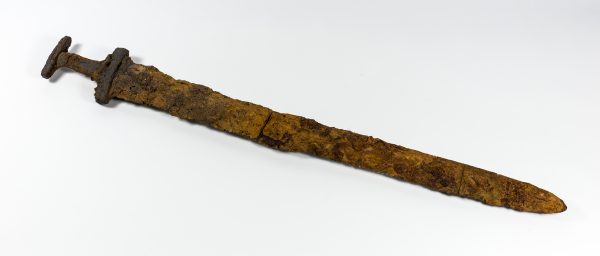
A Viking sword found at Repton, Derbyshire. (c) Derby Museums and Art Gallery
While weapons are highly-visible in archaeological contexts, their use in burials only represents a small segment of the population within a social context that had many different high-status burial practices (Harrison 2015, 314). Secondly, poorly furnished burials are understudied with no definitive comments made about them (Harrison 2015, 314–15; 2008, 166–90). In addition, the relationship between perceived and actual status and the fact that no artefact has a fixed value or meaning but rather its meaning is imposed both complicate the issue further (Harrison 2015, 304). The perceived importance of an individual is heavily influenced by local burial tradition. For example, at Kilmainham/Islandbridge a large number of weapon burials with high-quality swords were discovered which reflects the importance of Dublin between the ninth and tenth centuries while the number of graves containing these high-quality swords may reflect the role competitive display played within Dublin society (Harrison 2015, 304; Harrison and Ó Floinn 2014, 75–93). However, the situation in the former Danelaw is very much the opposite with a general paucity of weapon burials east of the Pennines (Harrison 2015, 304; Graham-Campbell 1980, 379; Richards 2000, 142). Harrison argues that this may be a reflection of the higher value placed on weapons in the Danelaw than in Dublin or elsewhere along the western seaboard (Harrison 2015, 304).
One last point to consider when examining burials and grave goods is that the choice of grave goods can reflect how the deceased or those burying them wished their identity to be portrayed can equally affect weapon burials. Moreover, grave goods can underline the hybridity of an individual’s identity. For example, the shield bosses of Kilmainham/Islandbridge combine elements of both Irish small bosses and Anglo-Saxon conical bosses to create a fusion shield boss type only found near Dublin reflecting the distinct local identity of its elites (Harrison 2015, 309; Harrison and Ó Floinn 2014, 122–25; Bøe 1940, 33, 38).
So how can weapons in burials be used to potentially identify whether or not individuals were involved in military activities? In simple terms, there is no definitive way of correlating the two but by studying the graves within their historical and geographical context, it may be possible to make a case. One strong indicator that an individual may have been involved in military activities are any signs of trauma on the skeletons, such as those found at Repton, alongside the inclusion of weapons as grave-goods.
References:
Bøe, Johs. 1940. Viking Antiquities in Great Britain and Ireland, Part 3: Norse Antiquities in Ireland. Edited by Haakon Shetelig. Oslo: H. Aschehoug.
Graham-Campbell, James. 1980. ‘The Scandinavian Viking-Age Burials of England: Some Problems of Interpretation’. In Anglo-Saxon Cemeteries, edited by Phillip Rahtz, Lorna Watts, and Tania Dickinson, 379–82. British Archaeological Reports British Series 82. Oxford: Archaeopress.
Härke, Heinrich. 2014. ‘Grave Goods in Early Medieval Burials: Messages and Meanings’. Morality 19 (1): 41–60.
Harrison, Stephen. 2008. ‘Furnished Insular Scandinavian Burial: Artefacts & Landscape in the Early Viking Age’. Dublin: Trinity College Dublin.
Harrison, Stephen. 2015. ‘“Warrior Graves”? The Weapon Burial Rite in Viking Age Britain and Ireland’. In Maritime Societies of the Viking and Medieval World, edited by James Barrett and Sarah Gibbon, 299–319. Society for Medieval Archaeology. Leeds: Maney Publishing.
Harrison, Stephen, and Raghnall Ó Floinn. 2014. Viking Graves and Grave-Goods in Ireland. Dublin: National Museum of Ireland.
Richards, Julian. 2000. Viking Age England. Stroud: Tempus.

